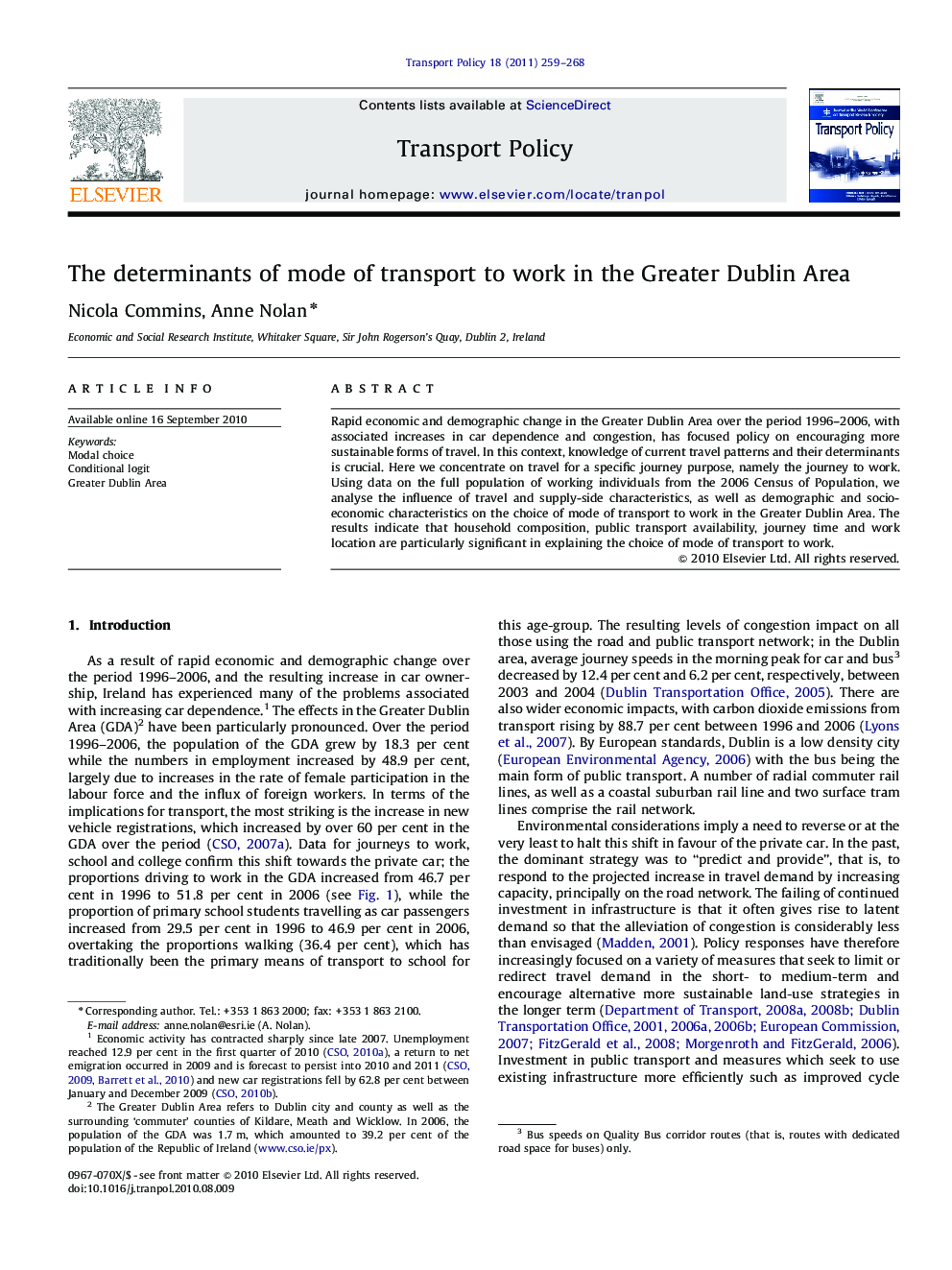| Article ID | Journal | Published Year | Pages | File Type |
|---|---|---|---|---|
| 1065309 | Transport Policy | 2011 | 10 Pages |
Rapid economic and demographic change in the Greater Dublin Area over the period 1996–2006, with associated increases in car dependence and congestion, has focused policy on encouraging more sustainable forms of travel. In this context, knowledge of current travel patterns and their determinants is crucial. Here we concentrate on travel for a specific journey purpose, namely the journey to work. Using data on the full population of working individuals from the 2006 Census of Population, we analyse the influence of travel and supply-side characteristics, as well as demographic and socio-economic characteristics on the choice of mode of transport to work in the Greater Dublin Area. The results indicate that household composition, public transport availability, journey time and work location are particularly significant in explaining the choice of mode of transport to work.
Research highlights► Journey time is significant in explaining choice of mode of transport to work. ► Home and work proximity to public transport discourages use of car for commuting. ►Age, gender and young children are important drivers of commuting mode choice
